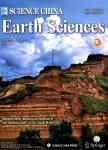Theoretical analysis of high-speed rail seismic imaging
Theoretical analysis of high-speed rail seismic imaging作者机构:School of Earth and Space SciencePeking UniversityBeijing 100871China Hongshan National Observatory on Thick Sediments and Seismic HazardsBeijing 100871China
出 版 物:《Science China Earth Sciences》 (中国科学(地球科学英文版))
年 卷 期:2022年第65卷第4期
页 面:714-723页
核心收录:
学科分类:08[工学] 0708[理学-地球物理学] 0814[工学-土木工程]
基 金:supported by the public High Preference Computer of Peking University supported by the Program of Hebei Earthquake Science and Technology Spark Plan (Grant No. DZ20200827054)
主 题:High-speed rail seismic source Reverse time migration HSR interference field
摘 要:We do theoretical research on using high-speed rail(HSR)as an active source to perform reverse time migration(RTM)and analyze the influence of the interferometric field on the seismic imaging results.When a train runs on a rail viaduct,the evenly spaced piers of the viaduct generate a nearly spherical interferometric wavefield with radically travelling waves in frequency-determined directions.We find that the directions span stationary areas of the interference phases,of which cross-talks deteriorating HSR seismic imaging can be well suppressed by stacking.Accordingly,we propose a method for performing RTM by employing HSR data.Numerical tests primarily verify the proposed method by use of 2 D and 3 D acoustic wave equations.Subsequently,we execute least square RTM to suppress crosstalk artifacts,further improving the imaging quality.At last,we stack images derived from trains with different velocities,which extends the frequency band,effectively overcoming the limit from the discrete spectrum of the source wavelet.



